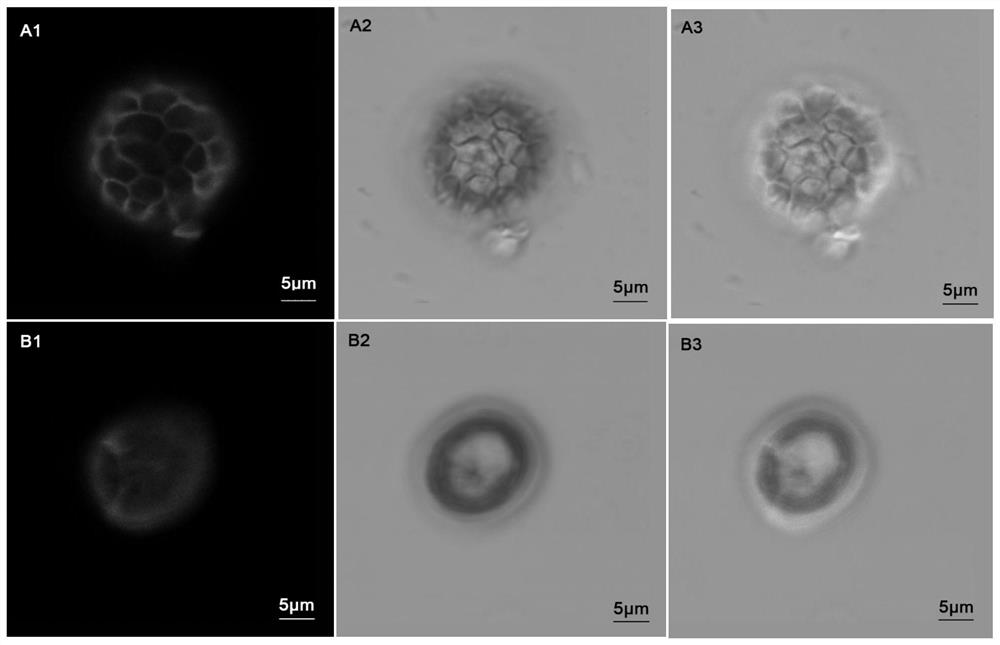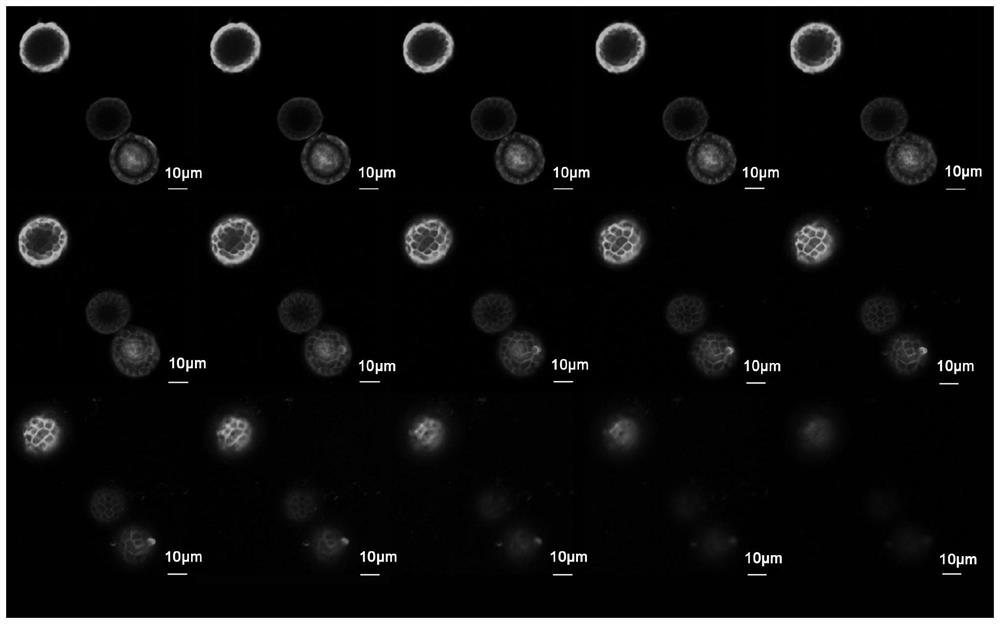A method for distinguishing teliospores of Tilletia dwarfis and teliospores of Tilletia glabris
A technology of wheat dwarf black ears and teliospores, applied in the field of cell biology, can solve problems such as difficult to distinguish, and achieve the effects of saving detection time, simplifying reagents, and simplifying operations
- Summary
- Abstract
- Description
- Claims
- Application Information
AI Technical Summary
Problems solved by technology
Method used
Image
Examples
Embodiment 1
[0031] The identification method of embodiment 1.TCK teliospore and TFL teliospore
[0032] 1. Dyeing
[0033] Take one grain of T. dwarf Tilletia galls and one grain of T. glabras galls, put them into small centrifuge tubes respectively, soak in water for 30 minutes, remove the seed coat with tweezers, and centrifuge to remove the supernatant. The samples to be tested were stained with 20 μg / ml WGA-AF488 dye for 60 min, then washed with 1×PBS (pH 7.4) for 3 to 5 times, and stored in 1×PBS for observation. All operations were carried out at room temperature, and the stained samples should be kept away from light.
[0034] 2. Microscopic observation
[0035] Put the teliospores of T. tritici dwarfis and T. glabris after dyeing and washing on concave glass slides respectively, cover them with coverslips and place them under a laser confocal microscope (Leica TCS SP5CLSM) for scanning observation. Select the xyz scanning mode, select the excitation light with an excitation wav...
PUM
 Login to View More
Login to View More Abstract
Description
Claims
Application Information
 Login to View More
Login to View More - R&D Engineer
- R&D Manager
- IP Professional
- Industry Leading Data Capabilities
- Powerful AI technology
- Patent DNA Extraction
Browse by: Latest US Patents, China's latest patents, Technical Efficacy Thesaurus, Application Domain, Technology Topic, Popular Technical Reports.
© 2024 PatSnap. All rights reserved.Legal|Privacy policy|Modern Slavery Act Transparency Statement|Sitemap|About US| Contact US: help@patsnap.com










